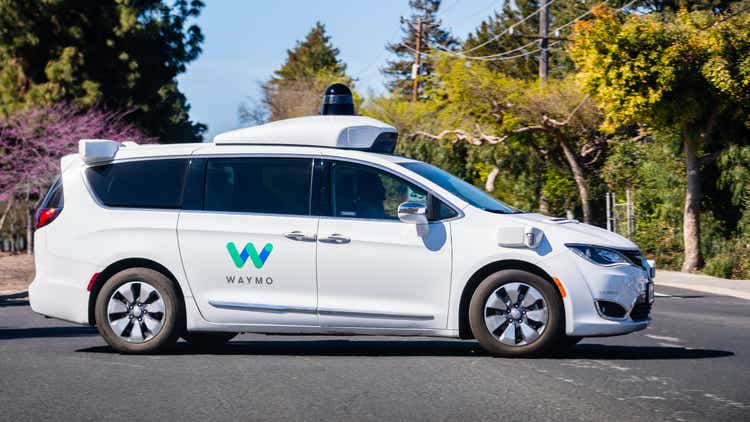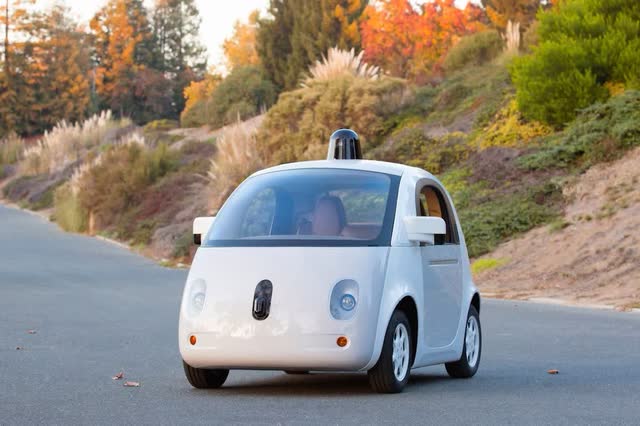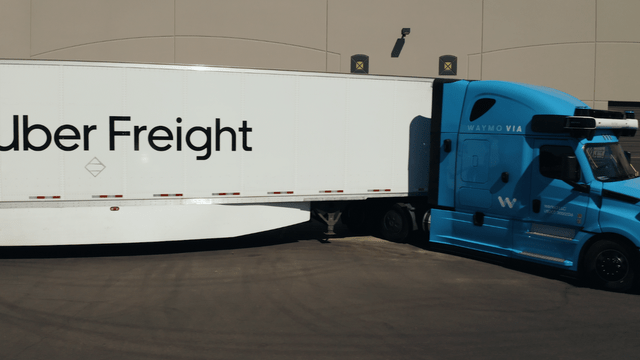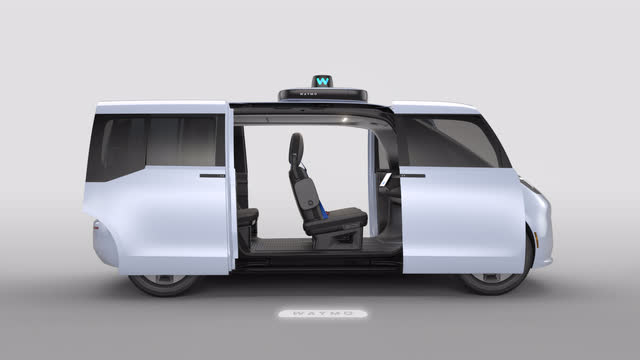Sundry Photography
Introduction
Many articles on Seeking Alpha deal with Alphabet Inc.’s (NASDAQ:GOOG, NASDAQ:GOOGL) finances, general business, and prospects. This is not one of those articles. Instead, it’s all about Waymo: a division of Alphabet listed in the reports alongside DeepMind and other business models under “other bets.” I intend to provide an overview of Waymo’s current partnerships and what potential there is. A few months ago, I wrote an in-depth article about DeepMind, which is a fascinating read, in my opinion. Check it out here.
A little bit of history
We started on this journey over a decade ago. Every mile we’ve driven on every road we’ve traveled has led us to where we are today. And we’re in it for the long haul — we’ve only just begun.
Waymo as a subsidiary has existed since 2016 and is the successor of an earlier project called Google Driverless Car. This was initially led by Sebastian Thrun, the co-inventor of Google Street View and a former professor of artificial intelligence at Stanford University. In 2011, this project covered approximately 257,000 km under limited driver involvement and more than 1600 km without driver involvement. In 2013, a collaboration with Tesla (TSLA) was under discussion, with Alphabet providing the necessary technology to enable autopilot driving in Tesla in the future. But Elon Musk stated that Alphabet’s system of sensors is too expensive and Tesla is “not focused on autopilot right now [but] we will be in the future.”
In a 2015 accident report, Alphabet stated that 20 cars had traveled more than 2.7 million kilometers in recent years. During this time, the Google car was involved in eleven accidents: the self-driving car was not to blame for any of them, and no one was injured. According to the company, in 2016, there was one accident for which the vehicle was to blame for the first time. Waymo uses various cars, some modified to be more specialized in autonomous driving. They are working together with Jaguar, Toyota, Lexus, and Chrysler.
The Chrysler Pacifica Hybrid minivans are our first vehicles built on a mass-production platform with a fully-integrated hardware suite, newly designed by Waymo for the purpose of full autonomy.
Initially, the company tried to build its electric-powered vehicles (“EVs”), but this project was abandoned in 2017.
Current partnerships
Alphabet is looking for strategic partnerships to deploy Waymo, as the technology is more or less mature and has already received road approvals in some places. A partnership was formed with Uber Technologies, Inc. (UBER) in June 2022. More specifically, it is a strategic collaboration with Uber Freight, focusing on self-driving trucks.
Today Uber Freight and Waymo Via announce a long-term strategic partnership to connect their technologies and deploy autonomous trucks at scale on the Uber Freight network. This partnership brings together the power of Waymo’s autonomous driving technology with the scale of Uber Freight’s network and leading marketplace technology, unlocking a road map for the thoughtful and safe implementation of autonomous trucks on roads across the US.
The initial goal is to have autonomous trucks do the long distances, and human drivers do the short ones. Given the shortage of truck drivers, this would be an enormous help and competitive advantage. This partnership is most likely a win-win collaboration: Waymo has the technology, and Uber has the need.
This partnership comes at a time of high fuel costs, a shortage of drivers, and rapidly increasing demand. The future of the industry will rely on a combination of autonomously driven and human-driven trucks deployed efficiently and at scale across a digital and optimized network. The innovative hybrid freight model between Uber Freight and Waymo Via will be the key to unlocking much-needed capacity for shippers, increasing fuel efficiency, providing carriers with the opportunity to scale their businesses, and ultimately streamlining global supply chains to the benefit of everyone.
A similar collaboration was already agreed upon in 2020 with Daimler (OTCPK:DTRUY, OTCPK:DTGHF), one of Germany’s largest automakers, which also manufactures trucks. At the moment, converted Daimler trucks are being tested in the USA with Level 4 autonomous driving. Later, Daimler says it wants to expand the technology geographically to Europe and other areas. As far as I know, fully automated driving is not yet allowed in Europe, but that should change in the next few years.
At the end of 2021, they also announced a partnership with Chinese automaker Geely (OTCPK:GELYF, OTCPK:GELYY). They want to use Waymo’s technology in self-driving minibuses, which are currently being designed in Sweden. Production should begin within the next few years.
In my opinion, one of the most interesting ideas is a pilot project with Walmart (WMT) in Chandler, Arizona. Customers can order groceries online for pickup at the store and are transported to and from the store in Chandler in self-driving cars from Waymo.
Customers don’t even need to get out of the vehicle when using the service. Walmart employees simply bring their grocery order right out to the van curbside, and the vehicle then whizzes them straight back home.
Walmart Partners with Waymo
Waymo One
In addition to these collaborations, Waymo also has its transportation app, Waymo One, which partially drives autonomously in San Francisco and Phoenix. In San Francisco, there is still a driver in the car and only customers in the “Trusted Tester program” drive fully autonomously. All in all, this is still a limited local service that is still in the test phase. It is not yet possible to say when the service will be extended to other cities.
Waymo One is our fully public, fully autonomous ride hailing service. Now anyone can take fully autonomous rides anytime they’re in Metro Phoenix. Just download the Waymo One app and ride right away.
Valuation
An article in Forbes states that the valuation was as high as $175 billion a few years ago and is now down to $30 billion. This sounds much more realistic. As a standalone company, Waymo would be an up-and-coming startup with a lot of potential but only at the beginning and without significant revenues.
$30B currently represents 2.4% of Alphabet’s market capitalization. So this is remarkable and shows that analysts believe Waymo has a chance to become a future revenue driver. Alphabet is known for trying out many things and quickly shutting them down again, the most recent example being the gaming service Stadia. Given the progress and partnerships, Waymo will almost certainly be spared this fate.
Unfortunately, I couldn’t determine if and how much revenue Waymo makes. The number is hidden in Google’s “other bets.” If there are revenues, they are vanishingly small, especially compared to Alphabet’s total cash flow.
Potential market size
According to verifiedmarketresearch, the market for autonomous trucks is already $460M in 2020 and is expected to grow 22% per year to $1.8B by 2028. This number doesn’t sound very big, but I think even 2028 will still only mark the beginning of autonomous driving in retrospect. In a few decades, I think it’s very likely that the market will be much more significant.
The general market for autonomous driving naturally has much more potential and possible applications that we may not even be able to imagine today. Who says it has to stay with cars? What about flying cabs? One day, possibly into space. When the technology is mature enough, it will be easy to integrate it into other vehicles.
The global autonomous vehicle market was estimated USD 94.43 billion in 2021 and it is projected to hit around USD 1808.44 billion by 2030, poised to grow at a compound annual growth rate (CAGR) of 38.8% from 2021 to 2030.
Conclusion
It seems that the technology is now mature enough to be used after more than ten years of development. Now it is up to the regulatory authorities to approve it. I wanted to write this article because I think Waymo is one of the most interesting Google side projects (next to DeepMind), and I also wanted to find out how far the agreed partnerships extend. I think expanding these partnerships is also the most crucial driver for further success.
Of course, there is also a lot of competition that can drive autonomously in the U.S. and China. We will soon (or have already) reached a point where the technology itself is no longer the problem, but who has positioned themselves in the market, how early, and is capturing market share as early as possible.





Be the first to comment